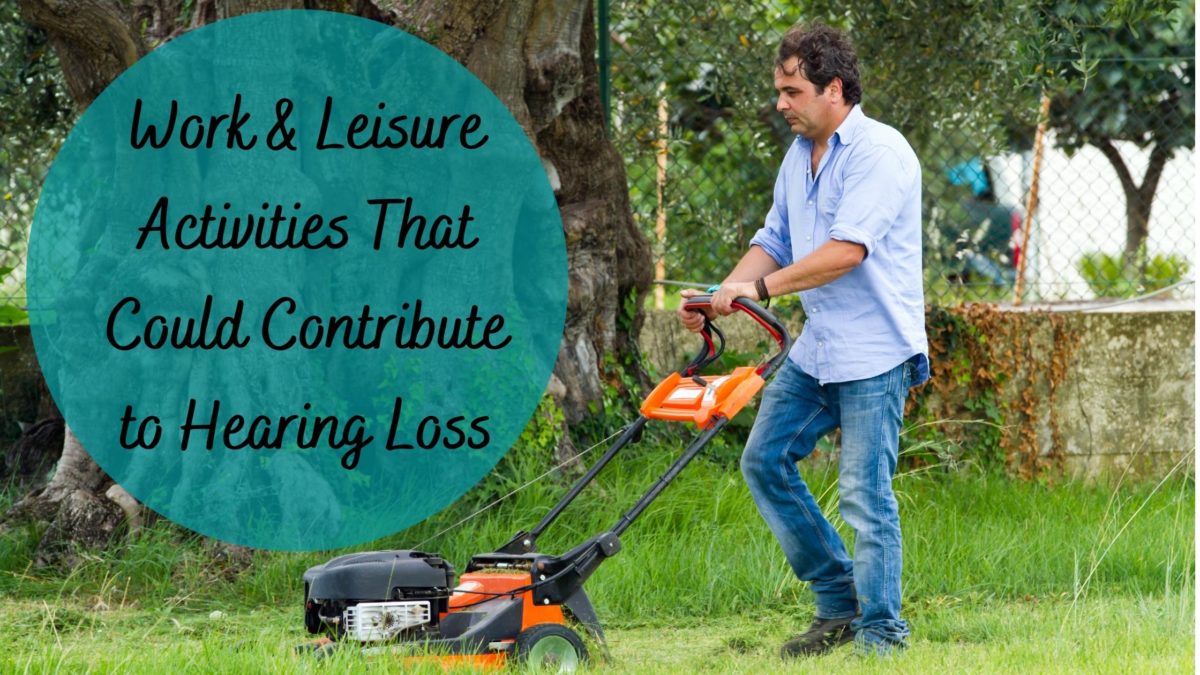Hearing loss is commonly thought to be something that occurs as we age or as a result of a loud sound burst. But did you know that there are noises we hear daily that can permanently harm our hearing?
We may not pay attention to these everyday noises because we have become accustomed to them. They’re simply a part of our daily lives. The long-term effects they have on our hearing, on the other hand, are anything but routine. Learn more about the noises that cause noise-induced hearing loss when we are at work and play.
What is noise-induced hearing loss?
Noise-Induced Hearing Loss (NIHL) is a term that refers to hearing loss caused by noise. It is currently one of the most common hearing loss types (the other being presbycusis or age-related hearing loss). Noise-induced hearing loss can lead to one of three types of hearing loss: sensorineural hearing loss, conductive hearing loss, and mixed hearing loss. Sensorineural hearing loss occurs when the hair cells in our inner ears become permanently damaged and lose their ability to transmit neural signals to our brains, where they are recognized as sounds.
Noise-induced hearing loss can occur after single loud noise exposure, such as a firecracker or explosion (120 decibels), or it can develop over time. When people are exposed to sounds in the 85-decibel range or above, they experience gradual noise-induced hearing loss over time. Hearing specialists agree that listening to a sound at 85 decibels for one hour can already cause permanent hearing loss.
The problem is that many noises we hear when working or off-work are at or above this 85-decibel level. Let’s take a look at a few of these dangerous sounds.
Leisure sources of noise
- Stereo Speakers – At maximum volume, home stereo systems can reach between 110 and 140 decibels. When a single exposure to 120 decibels can result in immediate permanent hearing loss, it’s risky to listen to music at 110 decibels for an extended period! Follow the 60-60 rule, as recommended by hearing specialists: For no more than 60 minutes per day, listen at 60 percent of the volume. Allow your fears to rest by taking breaks.
- Using Earbuds while on your smartphone or laptop – Earbuds are helpful whether you’re commuting or working out at the gym. Most smartphones now include a pair of earbuds with a built-in microphone for making phone calls. The issue is that earbuds do not eliminate background noise in your environment. So, when you use those earbuds to listen to a phone call, music, or other media, you tend to turn up the volume.
To make matters worse, the placement of earbuds in your ear canal so close to your eardrum creates noise levels that have been compared to coal mine drilling. To put it another way, earbuds can cause a lot of harm in a short period.
Consider using noise-canceling headphones, which do a better job of blocking out ambient noise and thus allow you to lower the volume. When listening to music or other media, remember the 60-60 rule once more. You might also be interested in apps that allow you to control your phone or tablet volume, especially if you have children who frequently use headphones.
DIY Tools
A chainsaw or nail gun produces a noise level of 110 to 140 decibels. It’s not worth putting your hearing in jeopardy for a home improvement project. You should also be aware of home maintenance tools like lawnmowers, leaf blowers, and trimmers.
Noise sources at work
People in a variety of professions are exposed to hazardous levels of noise. OSHA has issued regulations to ensure that noise levels in the workplace are kept at a safe level. Most employers in louder professions, such as construction or airfield operation, provide hearing protection. Even if you don’t think you’re being affected, it’s essential to follow hearing protection regulations if you work in a noisy environment.
Noises on the job, after all, can become monotonous and a regular part of our day. Machine sounds may fade into the background and become white noise. While 75% of factory workers believed their hearing was normal, hearing tests revealed that 42% of them had some degree of hearing loss, according to a survey conducted in 2012.
There is concern that people in professions that aren’t typically associated with loudness are still exposed to hazardous sound levels. Dentists and dental assistants, for example, are prone to hearing loss and tinnitus. Hearing loss can be caused by the high-frequency noise produced by dental tools and drills. Restaurant employees are also susceptible to hearing loss. Restaurant workers are exposed to various noise sources during a shift, including ambient, lively diner chatter, and noise from an industrial kitchen.
What to do when you notice hearing loss
Noise-induced hearing loss may not be noticeable right away. If you have trouble hearing, it is important to schedule a hearing test with us! Our in-depth hearing tests will give you a better understanding of your current hearing abilities. We can provide treatment to help you once again understand the conversations around you.

